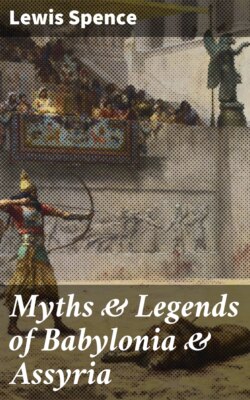Читать книгу Myths & Legends of Babylonia & Assyria - Lewis Spence - Страница 21
На сайте Литреса книга снята с продажи.
The Last of the Babylonian Kings
ОглавлениеNabonidus (555-539 B.C.) was the last of the Babylonian kings—a man of a very religious disposition and of antiquarian tastes. He desired to restore the temple of the moon-god at Harran and to restore such of the images of the gods as had been removed to the ancient shrines. But first he desired to find out whether this procedure would meet with the approval of the god Merodach. To this end he consulted the augurs, who opened the liver of a sheep and drew thence favourable omens. But on another occasion he aroused the hostility of the god and incidentally of the priests of E-Sagila by preferring the sun-god to the great Bel of Babylon. He tells us in an inscription that when restoring the temple of Shamash at Sippar he had great difficulty in unearthing the old foundation-stone, and that, when at last it was unearthed, he trembled with awe as he read thereon the name of Naram-sin, who, he says, ruled 3200 years before him. But destiny lay in wait for him, for Cyrus the Persian invaded Babylonia in 538 B.C., and after defeating the native army at Opis he pressed on to Babylon, which he entered without striking a blow. Nabonidus was in hiding, but his place of concealment was discovered. Cyrus, pretending to be the avenger of Bel-Merodach for the slights the unhappy Nabonidus had put upon the god, had won over the people, who were exceedingly wroth with their monarch for attempting to remove many images of the gods from the provinces to the capital. Cyrus placed himself upon the throne of Babylon and about a year before his death (529 B.C.) transferred the regal power to his son, Cambyses. Assyrian-Babylonian history here ceases and is merged into Persian. Babylonia recovered its independence after the death of Darius. A king styling himself Nebuchadrezzar III arose, who reigned for about a year (521-520 B.C.), at the end of which time the Persians once more returned as conquerors. A second revolt in 514 B.C. caused the partial destruction of the walls, and finally the great city of Babylon became little better than a quarry out of which the newer city of Seleucia and other towns were built.
